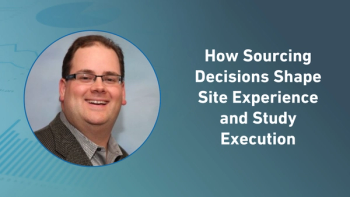
- Applied Clinical Trials-11-01-2011
- Volume 20
- Issue 11
Clinical Grant Expenditures are Stabilizing
Site per visit increases have been smaller in recent years.
Site per visit increases have been smaller in recent years. To a large extent this may be a function of the number of sites that are being opened in non-traditional, less expensive geographies. According to GrantPlan® and
Mean cost per visit in Phase II-III clinical trials.
GrantPlan subscribers conduct nearly 80% of all commercial clinical trials around the world, with each company contributing the active grant agreements to the database. On a cost per visit basis, site costs have risen or stayed relatively flat in the various major geographies for conducting clinical trials. The United States continues to be the most expensive country in which to conduct clinical trials, followed by the United Kingdom and Western Europe. Just as importantly, the difference in per visit costs between the traditional and newer geographies continues to exist. Latin America, Asia, and Eastern Europe continue be lower priced areas for clinical grants.
—TTC (for more information, contact
Articles in this issue
about 14 years ago
Clinical Trial Recruitment in Dermatologyabout 14 years ago
Predicting Successful Site Performanceabout 14 years ago
Business and News Update November 2011about 14 years ago
Seamless eClinical Solution from Perceptiveabout 14 years ago
Ethics of Biobank Research Come Under Scrutinyabout 14 years ago
An Update to Real Innovationabout 14 years ago
BRIC Countries Contribute to Researchabout 14 years ago
eClinical: A Yellow Brick Road?about 14 years ago
Patients, Investigators Seek Flexibility at FDANewsletter
Stay current in clinical research with Applied Clinical Trials, providing expert insights, regulatory updates, and practical strategies for successful clinical trial design and execution.




